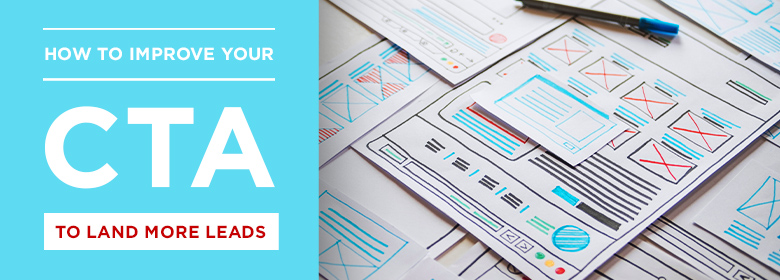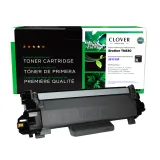
Arguably the most critical part of your copy, your call-to-action (CTA) is the marketing element that sets your prospect on his or her path through your marketing funnel. It does this by providing simple instructions for what they should do next by providing a direction or link.
CTAs can promote your brand, turning cold prospects into leads and leads into conversions. In short, they are powerful online marketing tools for securing sales opportunities.
For example, using a CTA with a captive audience such as blog subscribers or social media followers allows you to direct them to an email list, a product page on your website, or to some other area of your website — all while keeping them from clicking away to a competitor’s site.
Are people really swayed by CTAs? Statistics show that 90% of visitors to your site will read your CTAs and many of them will act, resulting in a conversion rate of more than 120%.
As you can see, designing an attention-getting CTA can be a good way to get more leads and increase your conversion rate. But there’s more that goes into a CTA than a simple, “Click here.” Below, we’ll explore some of the elements of a winning CTA design.
4 Ways to Improve Your CTAs for Better Lead Generation Results
We’ve already established why CTAs are important, but we need to take a closer look at all of the factors that go into getting your website visitor, email subscriber, or social media contact to actually click through and become a lead.
To help you improve your CTAs, we’ve curated the following four ways you can tweak your CTAs for maximum results.
- Placement is Key
Where you place the CTA is critical — and it’s dependent on the complexity of the web page on which it appears, the device upon which it’s viewed, and on your audience’s motivation for visiting.
Above or Below?
On a shorter page, your CTA should appear “above the fold,” that is, in the area a web visitor sees before they have to scroll down.
For a more informative and complex page, the CTA may do better being placed at the bottom.
However, visitor motivation enters into this equation.
MECLABS conducted a test that compared a shorter page with distracting navigation (and a CTA at the top) with a longer page with a clear, simple message (and a CTA at the bottom) to find that the simple page had a 220% higher conversion rate.
That higher rate shows that because the longer page was less distracting (and annoying), visitors were willing to wait to get to the CTA destination.
Left or Right?
Because the human eye tends to scan in a “Z” pattern (from left to right, upper right to lower left, and then left to right again) the best placement for a CTA is on the right sidebar.
Desktop or Mobile?
Desktop users are more likely to scroll through pages before clicking. For mobile users, a study by Mediative showed that only 7.4% of users clicking on Google results pages scrolled past the fourth listing, a trend that experts say extends to CTA click-through behaviors.
- Focus on Design and Copy
CTAs are signposts for the behavior you want your visitors to complete, so you have to make them easy to understand. Using a high-contrast color for the click-through button, for instance, is a great way to capture attention.
For copy, it’s important the user understands exactly what they’re getting with a click, so use simple language. However, avoid language like “submit,” which doesn’t tell them what will happen upon clicking and will lower your conversion rate.
Finally, be sure to include a benefit in your CTA language so visitors can perceive value in the click.
For example, you could say, “Get a Quote on Remanufactured Cartridges” if your text also tells visitors they can save up to 15% on printing costs, or improve their carbon footprint, or how your cartridges solve the pain point you’re targeting.
- Segment Your Audience for Best Results
Segmenting your audience is a marketing strategy that breaks your larger target audience into specific subgroups to allow tailored messaging to ensure effective connection.
These subgroups can be created based on a number of factors, including:
- Geography
- Purchasing behavior
- Ethnicity
- Gender
- Age
- Income
- Education level
Many online tools have segmenting features built in. You can choose email automation systems like MailChimp or Marketo, Google Tag Manager, and others to break up your audience into specific groups.
- Don’t Forget to A/B Test
Conducting an A/B test means submitting more than one version of your CTA or an element within it, like a CTA button, to a sample of your target audience to gauge their response.
In an A/B test, you can test color, size, and wording of your button; the position of the CTA on your web page; and even the language — and design — of the landing page or CTA pop-up.
A/B tests will help you design a CTA that has maximum impact to increase ROI and conversions while avoiding unnecessary risks and expenditures of resources.
Final Words About Generating Leads with CTAs
Ensuring that you deploy each of the components, above, when designing your CTA will magnify the number of leads you collect and increase conversions. Done right, a good CTA will provide better lead generation than Google Ads.
On average the click-through rate (CTR) for CTAs across varying industries is 4.23%, with most industries seeing the highest results on simple button CTAs, followed by designed CTAs, and finally those that are text only.
This range points to the need to A/B test each element of your CTA to uncover which part is working and which needs to be revised. Don’t forget that your landing page is an important asset in converting leads via your CTA, so A/B test that, too!
If you’re looking at ways to improve your CTAs to maximize your web presence and increase lead generation and conversions, Clover Amplify can help. Our team of experts have cutting-edge knowledge in web development, social media management, blog development, content marketing and more. Contact a Clover representative today and get started now!













Comments